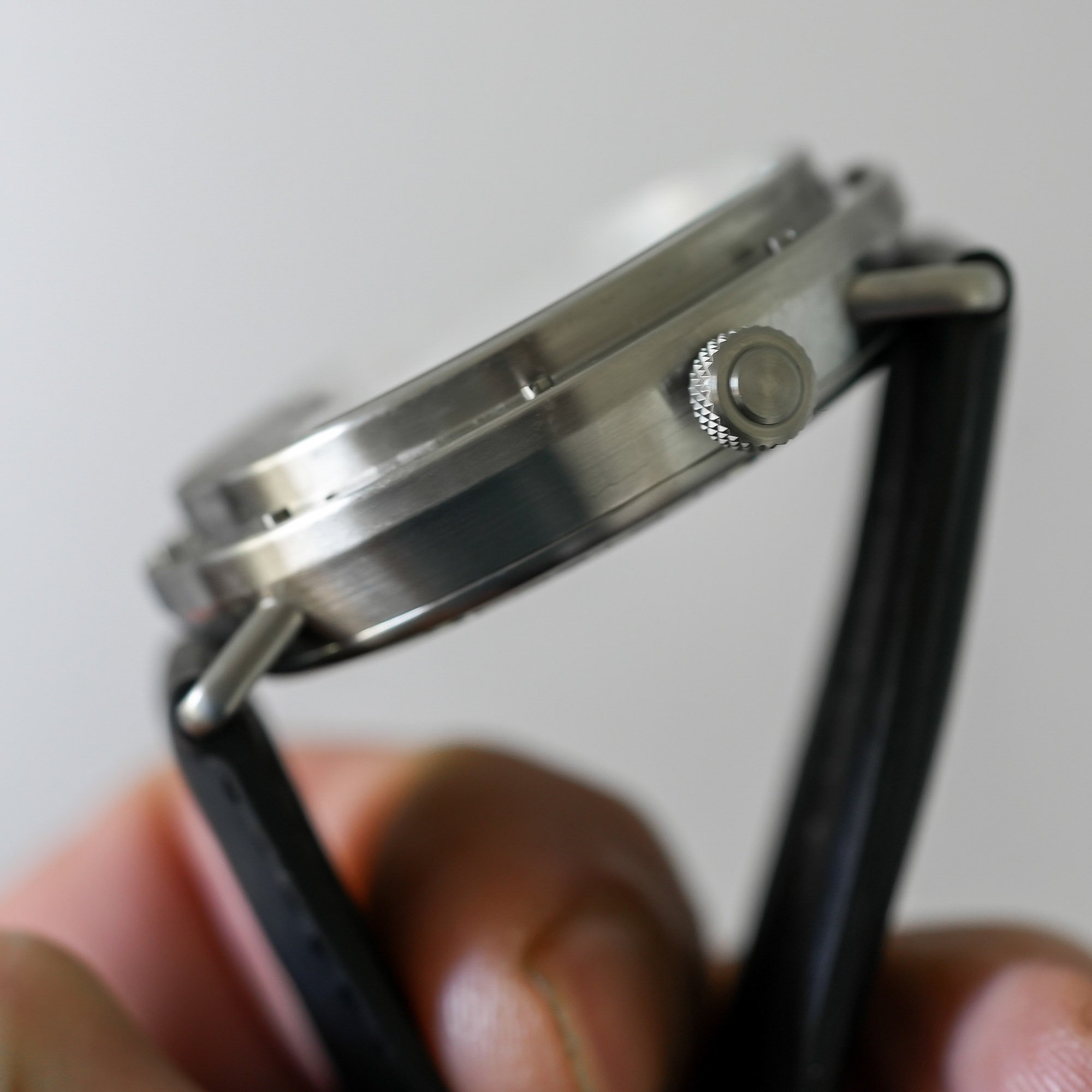The Updated Otsuka Lotec № 6 by Japanese Watchmaker Jiro Katayama
While instrument-inspired watches are nothing new, this particular example stands out with its unique design and emotional resonance.

In May of this year, we introduced Jiro Katayama, an independent watchmaker from Japan, and his brand Otsuka Lotec, which, despite its distribution being limited exclusively to his home country, has gained recognition across the continents. We had the pleasure of experiencing one of his models, the recently updated Otsuka Lotec № 6, and here are our notes.
Jiro Katayama, a Tokyo-based watchmaker and designer, draws his inspiration not from the realm of watches but from the industrial world where his career began – the world of cars, trains, aeroplanes, all kinds of vehicles, really, and gauges.
He studied automotive design and worked with Japanese automakers before a pivotal decision in 2008 changed his trajectory. Purchasing a bench lathe machine to create something entirely his own – since building a car was not feasible – led him to watchmaking. Katayama’s timepieces are truly unique and, in a way, sentimental as they are a reflection of the watchmaker’s mind and soul.
The No. 6 is a 42.6mm stainless steel watch with the look of an analogue metering device akin to an air pressure gauge or hygrometer. Its case, featuring a straight-grained finish, exudes a distinct steampunk vibe, complemented by a bezel secured with eight screws and a crown with rhomboid-shaped grooves positioned at 2 o’clock. Without the lugs, it resembles an instrument plucked from the machines in Hayao Miyazaki’s fantastical world of Howl’s Moving Castle. Yet, it remains a timepiece meant to be worn on the wrist. Despite its industrial appearance, relatively large diameter, and 11.8mm thickness, the Otsuka Lotec № 6 is comfortable enough, though its distinctive raised, bulging profile gives it an edgy character. While the earlier version of the № 6, introduced in 2015, used mineral glass, the updated model features sapphire crystal (with anti-reflection and anti-fingerprint coating) to protect the dial.
The monochromatic dial is secured to the movement with three visible screws and features a vertically brushed finish. Compared to the original version, this updated model features a simple metal, silver-toned brushed dial instead of the initial meteorite dial. It showcases two arched, or “fan-shaped,” scales across the upper part: 0 to 60 for the minutes on top and 0 to 12 for the hours below. The typeface, inspired by Japan’s highway signs, perfectly complements the overall aesthetic of the № 6. The numerals are crisp and clear. The inscriptions, starting from the lower left, read: “Made by Otsuka Lotec,” “№ 6 mechanical,” “Toshima Tokyo,” and finally, “Daily-life waterproof,” meaning a water-resistance of 30m.
As you might have guessed, the time display is retrograde. Once the hands – now bevelled on both sides in the latest version – cover the one-hour distance, the minutes hand jumps back to zero with a noticeable and exciting click, and both hands reset to zero instantly at midday and midnight (double click!). We didn’t notice, but Otsuka Lotec mentions that “when the hour and minute hands reach 0:00, there may be a discrepancy of up to 60 seconds in resetting to zero”. The display is somewhat reminiscent of an important Vacheron Constantin watch, the Mercator, yet with a way more steampunk approach and a totally different price.
The hour and minute hand mechanisms are housed in the lower covered part of the dial. Just above, an aperture subtly reveals a segment of the running seconds disc, alongside a funnel-like polished metal opening for the date display, which completes the short list of functions.
Unsurprisingly, the caseback offers a view of the movement – a decidedly industrial Miyota 9015 automatic, operating at 28,800 vibrations per hour with a 40-hour power reserve. While the movement features some decoration, it is not designed to captivate prolonged admiration. However, its practical aesthetic aligns seamlessly with the watch’s overall concept, making its exhibition a fitting choice. The module developed by Mr. Katayama, now produced in collaboration with watchmakers from Precision Watch Tokyo, remains hidden. However, you can see it at work in a short video published on the Otsuka Lotec website.
The Otsuka Lotec Model № 6 comes with a calf leather strap secured with a pin buckle engraved with the brand’s logo. Priced at JPY 440,000 (approximately EUR 2,500), these watches are exclusively available to Japanese customers, requiring a local credit card for purchase and no shipping outside Japan – factors that only heighten their allure. For more details, please visit otsuka-lotec.com.















5 responses
Note to self: Get Japanese credit card somehow.
Does the photographer have any idea what guitar pickups are made from?
I had a comment about the unbelievable decision to put a watch on guitar pickups.
Why did you remove it?
I have been subscribed to the newsletter for probably 10 years. I should probably reconsider, if this is how you deal with common sense criticism.
@R P – as you can see by my reply to your comment, we have not removed it… it’s there. And your previous comment too. Not sure what’s happening, but I can see all your comments (also for Furlan Marri)
Thanks Brice, and apologies.
It’s bizarre, maybe the moderation system is flickering comments in and out, as they appeared, went away, and came back. Or the CDN?
Anyway, apologies for jumping to conclusions.